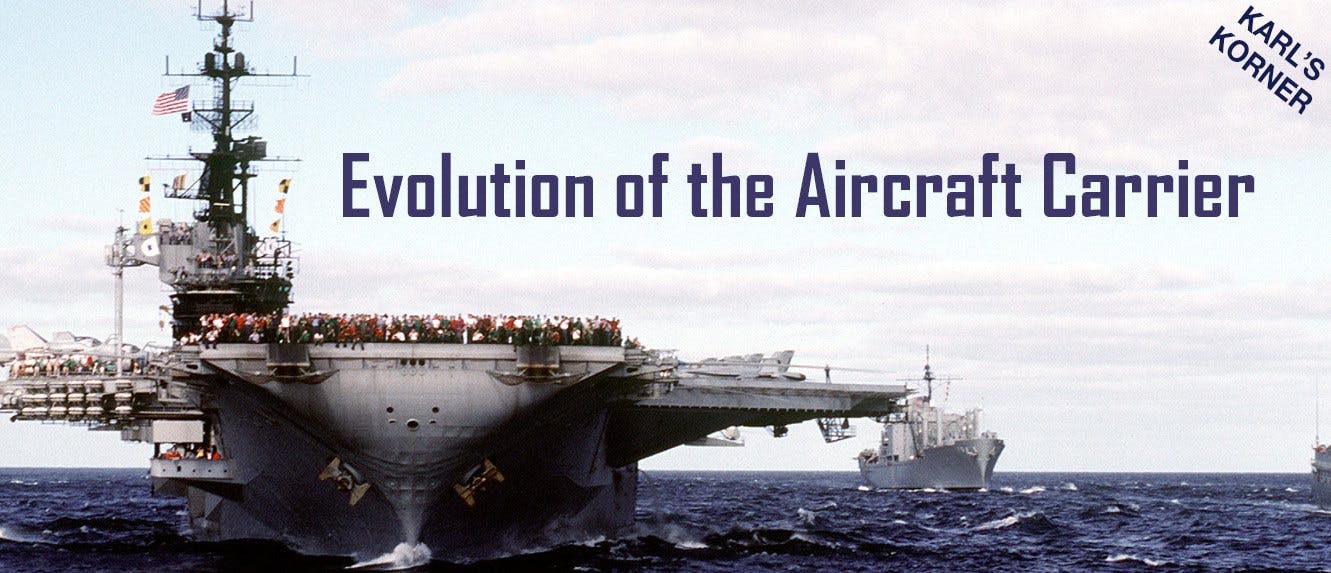 November 30, 2016 | Karl’s Korner
November 30, 2016 | Karl’s KornerThe Lexington & Saratoga
Welcome back to “Karl’s Korner”!
As November closes, we say goodbye to National US Aircraft Carrier Month, but we never stop appreciating our Carriers! Did you catch my last post about the USS Langley? If not, click here. For today’s post, I will share about the advancements of the Carrier as innovations were made early on. Learn more about the Lexington & Saratoga in Part 2 of this month’s Karl’s Korner... thanks for reading!
The Fleet Expands
British progress with aviation during World War One attracted the attention of both the U. S. and Japanese navies. The superiority of aerial spotting for naval gunfire confirmed a continuing place for shipboard aviation in the peacetime fleet, and the successful introduction of the experimental USS Langley led to calls for even more capable aircraft carriers. Even before this transition took hold, a more profound change occurred in 1922 as the Washington Naval Treaty eliminated new battleship construction for the next decade. A provision of the treaty permitted the U. S., British, and Japanese fleets to convert a few ships under construction into aircraft carriers, and American planners selected the hulls for two battlecruisers, the Lexington and Saratoga.
A part of the massive 1916 fleet expansion, the Lexington and Saratoga were intended as part of a class of large, fast, though moderately armored, capital ships. This design origin proved a mixed blessing for the conversion work. Their long hulls permitted lengthy flight decks some 866 feet in run, and 105 feet across, but below decks, space was needed for a large exhaust uptake network and space-consuming boat wells. The resulting hangar deck was less than half the flight deck length and just 70 percent its width. The turbo-electric dive, essentially massive electric motors powered by steam run generators, could deliver 33 knots, but it was complex and difficult to maintain. Apart from the massive funnel, the most distinctive external feature of these ships was the four enclosed gun houses for 8 eight-inch guns. In the context of the 1920s and early 1930s, carriers were expected to support the battleships with their short-ranged aircraft, and it was conceivable they could encounter fast enemy scouting cruisers. Having heavier cruiser-type armament could allow carriers to fend off flank attacks.
Though improvisations, the Lexington and Saratoga were welcome additions to the fleet, and by the early 1930s, their aircraft squadrons had rounded out the basics of carrier doctrine. This encompassed everything from efficient spotting of aircraft on the flight deck, including the innovation of using the flight deck as a parking area and maximizing the number of embarked aircraft, a practice not adopted by the Japanese or British, to capitalizing on the design’s mobility. This included successful simulated surprise attacks on the Panama Canal and Hawaii. Beyond providing aerial scouts, fighter cover, and protection for gunnery spotter planes, carrier aviation produced it own offensive capability in the form of dive bombing, which would produce decisive dividends in the next war. By 1935, the Fleet was ready to welcome its first purpose-built carrier, the Ranger. As always, thanks for reading - leave me a comment below if you enjoyed this month’s entry!
Launch em’... until next time,
Karl
Your Adventure Starts Now
Your email is the key to information that will open up all your possibilities for exploring the mighty Midway!

